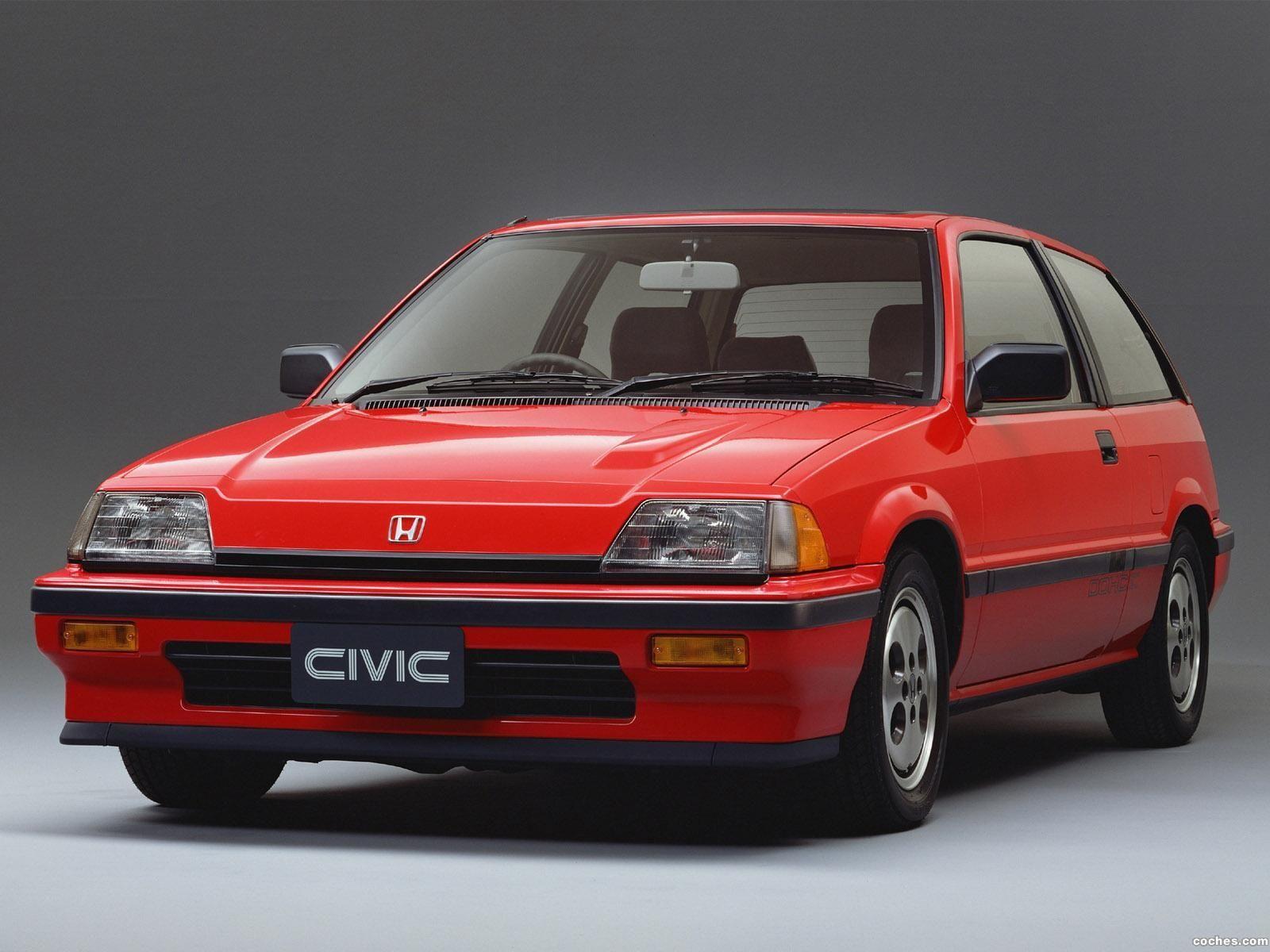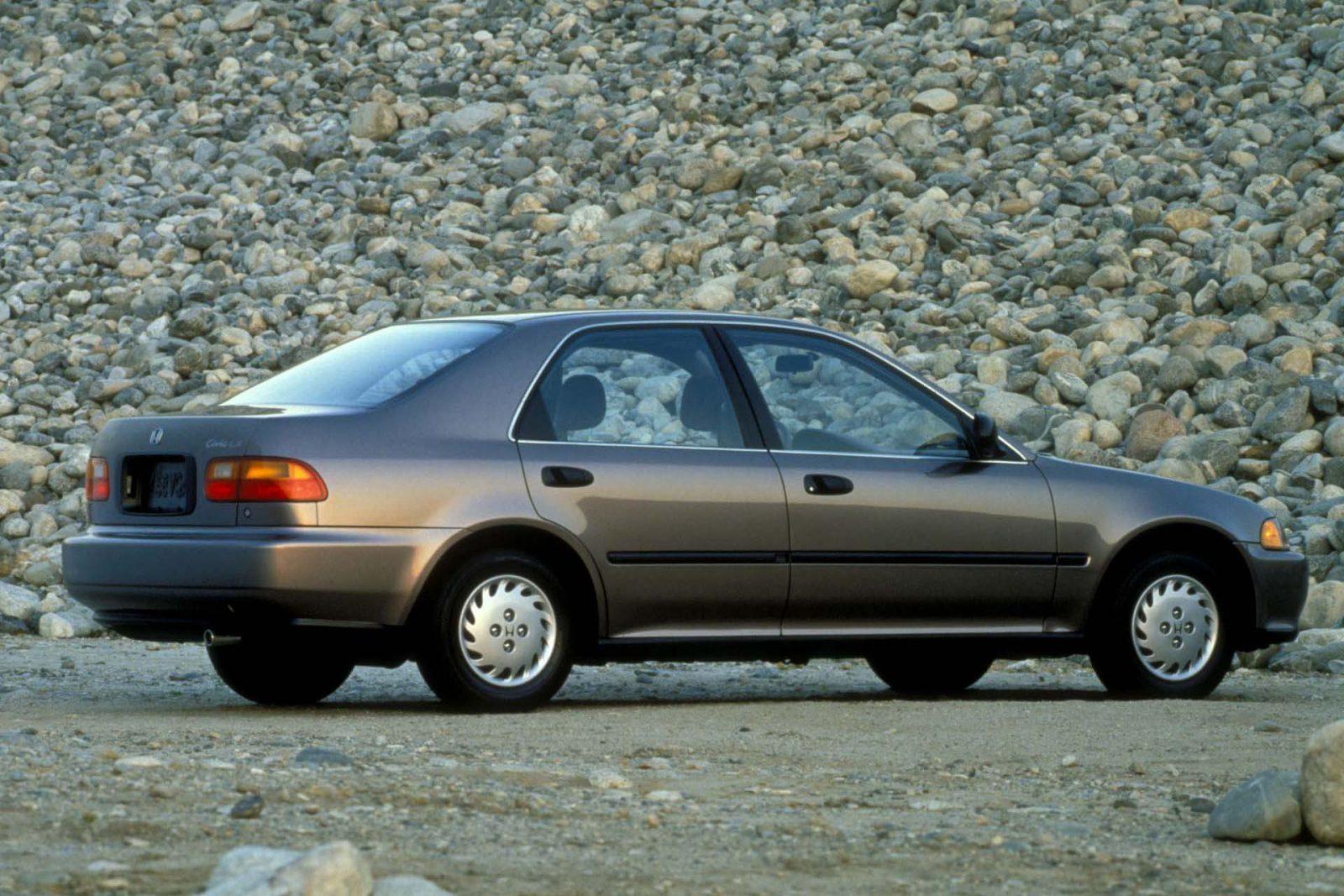During the long journey spanning over 40 years, Honda Civic has made millions of fans around the world. People love this car for its reliability, affordability, and loads of user-friendly features. Honda Motor Company has always tried to feed to the needs of consumers by launching various Civic models. If you look into the Honda Civic generations, there are all types of vehicles from 2-door hatchbacks to performance cars and 4-door sedans to cheap models.
The deep-rooted heritage of Civic is fascinating and would stir the interest of any fan. It has a humongous and ardent fan base as one of the longest-running nameplates in the automotive industry. The Honda Civic history is a rich one that not only the fans but any motorhead will love to delve into.
Contents
- How Did the Journey Start?
- The History of Honda Civic Generations
- First Generation (1972 to 1979)
- Second Generation (1979 to 1983)
- Third Generation (1983 to 1987)
- Fourth Generation (1987 to 1991)
- Fifth Generation (1991 to 1995)
- Sixth Generation (1995 to 2000)
- Seventh Generation (2000 to 2005)
- Eighth Generation (2005 to 2011)
- Ninth Generation (2011 to 2015)
- Tenth Generation (2015 to present)
How Did the Journey Start?
Before starting developing motor cars, Honda was already established as a major motorcycle manufacturer. In fact, Honda and motorcycles have become synonymous in many countries.
The company released a Kei car (the category of the smallest passenger car in Japan) model N360 in the market in 1967. They released several other versions including N600, H1300, and Civic of this model in the next few years.
Civic was the successor of Honda’s first car N360 and that car gave the company the taste of success in both the domestic and export markets. It created quite an impact in the 70s, competing with big names like Ford Fiesta and Volkswagen Golf.
The History of Honda Civic Generations
Honda Civic is much more than the car that has transformed one of the biggest motorcycle manufacturers into a big name car maker. In fact, it has changed the status of small cars, leading to the production of over 22 million across a span of ten generations.
First Generation (1972 to 1979)
Honda introduced the 1st gen model in 1972, but it was sold as a 1973 model. Available in a 5-door station wagon and a 3- and 5-door hatchback, this model ran with a 4-cylinder 1,169 cc engine and front-powered disc brakes. Luxury features included a wooden trimmed dashboard and reclining vinyl seats. Buyers could even choose the radio and AC system as optional features.

Another reason for Civic’s skyrocketed popularity was 1973’s oil crisis. People were looking for fuel-efficient automobiles and Honda offered the solution with the Civic. The engine was compatible with both leaded and unleaded fuel.
Besides, the 1973 CVCC engine was another success toward fuel-efficient vehicles. That engine type did not have a catalytic converter, allowing for more efficient combustion and saving fuel. It even did not require unleaded fuel to run, significantly reducing the amount of carbon monoxide and other toxic exhaust gases.
Second Generation (1979 to 1983)
‘70s oil embargo gave the Civic its popularity but Honda Civic generations did not need a crisis to hold on to the momentum.

The 2nd gen models, available in a 3- and 5-door hatchback, 4-door sedan, and 5-door wagon, were larger and more powerful. Based on a CVCC design, the basic 1335 cc engine could generate 55 hp while the optional 1488 cc unit was capable of 67 hp.
Honda offered three transmission choices for these models. Buyers could pick from a 2-speed semi-automatic, and 4- and 5-speed manual.
Third Generation (1983 to 1987)
The 1984 model year was released in September 1983. This time, the company reduced the previous gen’s cluster by integrating the 5-door wagon and hatchback models into a 5-door shuttle. The line also included a compact coupe, CRX. These cars came with a 4-cylinder D series engine that Honda has kept using for a long time.

Subsequently, the company released a high-performance car for the local market in 1984. The Si model had a better engine and updated suspension. The company later exported a slightly modified version of this model to the United States.
The release of a 4WD engine was also in the same year and the automaker updated it in 1887. With the upgraded unit, driving became much easier as it sends torque to the wheels that have the best traction.
For the 1985 models, the automaker introduced a fuel-efficient 8-valve engine that could go 57 miles/gallon while driving on the highway. In fact, hybrids these days can hardly beat that fuel economy.
Fourth Generation (1987 to 1991)
A redesigned Civic was launched this time after the first three Honda Civic generations. Honda offered various models across several trims in various countries. Those cars were slightly larger and had a comparatively lower hood line.

All cars that belonged to this line had a fully independent rear suspension. In terms of beautification, all of them had a chrome-tipped exhaust and upgraded interior features.
The introduction of a new 16-valve 1.6L engine unit along with the double-wishbone suspensions and aerodynamic styling established Honda as a formidable racing contestant.
SEE MORE
- What Is the Suitable Trim of Honda CRV Model
- Want to Unlock the Radio of Honda Civic? Here’s How to Get the Code
Fifth Generation (1991 to 1995)
Like some other Honda Civic generations, the models of this gen also went through a redesigning, involving bigger dimensions and a more streamlined design. The VX hatchback model belonged to this lineup came as a replacement for the HF model. It was even more fuel-efficient than its successor, producing 48/55 mpg.

There were uncanny similarities between the chassis of the 5th gen Civic coupe, sedan, and hatchback. It inspired the small car performance movement by allowing swapping off the engines between different models.
Sixth Generation (1995 to 2000)
This generation did not include any Si model, signaling the future of the Civic lineup. Honda launched these models with upgraded styling but no major changes.
However, the automaker later introduced the first-ever Si coupe with a B16A2 engine for the 1999 and 2000 model years. The production was limited but the performance loving fan base loved it.
This generation marks the discontinuation of del Sol (which replaced the CRX).
Seventh Generation (2000 to 2005)
Released in September 2000 for the 2001 model year, the 7th gen models were the least loved. Although you will not find any particular reason if compared them with other Honda Civic generations.

Part of the reasons for disliking could be the introduction of MacPherson struts in the place of the double-wishbone suspension, although this change created room for more interior space and a bump-free ride. Also, Honda did not give the well-liked Si a more powerful K20A2 engine.
The 7th gen is remarkable for introducing the first Civic hybrid model. According to Honda, it was the most fuel-efficient gas-run car at that time.
Eighth Generation (2005 to 2011)
Honda ditched the hatchback this time and brought back a coupe version of Si along with an unmatched Si sedan. It had a powerful K20Z3 engine with a 6-speed manual featuring a limited-slip differential. Consumers loved it not because of the specs only but for some standard features like stability control and airbags.

For this generation model years, the automaker made two distinct platforms: one for a hatchback and another for sedan and coupe. Aimed for the European region, the hatchback had an energetic styling. The model year ended in 2011 with a temporary discontinuation of Civic Type R for the Japanese market. The next-in-line hit the market only in mid-2017 during the tenth generation model years.
By the kick-off of this generation, Honda had already sold more than 16 million Civic across the world, including over 7 million in the USA. The versions made for the Japanese and North American markets had identical specs, except for a few design changes.
Ninth Generation (2011 to 2015)
Honda unveiled the coupe and sedan versions for the model years in 2011 and later updated the interior and exterior trims for the 2013 year models.
Eco Assist technology was introduced in most of these models and all of them had EBD, VSA, and ABS systems. A brand new multi-link rear suspension made the riding much smoother on bad roads. However, not many people liked this isolation from the road feel.
These models were highly fuel-efficient, saving 10% more fuel than the brand’s hybrid models.
Tenth Generation (2015 to present)
The 10th gen differs from all the previous Honda Civic generations because the structure of all its models is the brand-new Honda compact global platform. These have noticeable exterior changes from the previous generation models. The same goes for the interior, including a fully-customizable tachometer and speedometer and a 7-inch LCD interface.

Honda also released a first-ever Civic Type R for the North American market and brought back the hatchback version of Civic Si after an 11-year hiatus. The Si trim offers a few controlling options for the suspension components. It can reach 0 to 60 mph in 7 seconds but the guys at the Car and Driver achieved that feat in just 6.3 seconds.
A reading of Honda Civic through the years makes it clear that Honda has always listened to the demand of the Civic fan base. And, that is probably the reason it has never fallen out of favor of the consumers.



